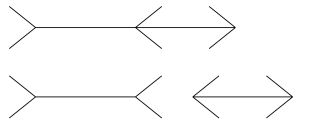Neuroscience
The Nature of the Conscious Field
Why the brain is a little like a loudspeaker.
Posted August 2, 2024 Reviewed by Tyler Woods
Key points
- In the conscious field, conscious contents are "encapsulated," protected from each other.
- Ambiguity does not exist in the conscious field, at least not at one moment in time.
- To understand encapsulation, it is useful to think of the mixing console at a recording studio.
- In some ways, the conscious field resembles a loudspeaker.
Now that we are reaching the 15th anniversary of this blog, I am reviewing many of the conclusions that have been presented in it throughout the years. The review began in our last post, which covered the processes in Stage 1 that are associated with consciousness. We will now continue and focus on Stage 2, “The Conscious Field.”
Of the three stages mentioned in the last blog, only Stage 2 is associated with “subjective experience” and is not unconscious. In Stage 2, there is the instantiation of the “conscious field.” The conscious field is composed of all that one is conscious at one moment in time. Each thing one is conscious of is a “conscious content.”
In contrast to Stage 1, in which sensory analyses provided multiple interpretations, or “multiple drafts,” of a stimulus or entire stimulus scene, in Stage 2, there is only one interpretation of the stimuli and scene at one moment in time (Merker, 2012). For each stimulus, and for the whole stimulus scene, there is no ambiguity, again, at one moment in time. (Ambiguity could be experienced across moments, as with ambiguous images, our next topic.)

For example, regarding the Necker cube, which is an ambiguous image that could be perceived in two ways, at one moment in time, the conscious field presents only one interpretation of the stimulus. The field at one moment reflects the “global best estimate” (Merker, 2012) of what each percept, and other mental representations (e.g., a memory), should be.
Regarding the global best estimate, consider inter-sensory illusions. In the McGurk effect (McGurk & MacDonald, 1976) discussed in our previous post, an observer views a speaker mouthing the phoneme “ga” but is presented with the auditory stimulus “ba.” Surprisingly, as a result of the sensory discrepancy, the observer perceives “da.” The observer is unaware of any discrepancy and is aware only of its perceptual product (“da”). Click here for a video demonstration of this effect. In this case, a given conscious content (“da”) emerges from polysensory configurations of afference, leading to the global best estimate (Merker, 2012) of what that content should be (Helmholtz 1856/1961).
Another property of the conscious field is that, in most cases, one cannot, at will, modify or turn off the nature of the conscious contents. The conscious contents are protected, or “encapsulated,” such that they cannot be changed by one’s desires or higher-order knowledge. For example, knowledge of the McGurk does not turn off or modify the illusion. In addition, one cannot, at will, turn off conscious contents such as pain, nausea, or urges. The desire for a cupcake is not turned off by the knowledge that one should avoid sugar. In the famous Müller-Lyer illusion, the knowledge that the two horizontal lines are, in fact, the same length does not turn off the illusion. In the illusion, the two horizontal lines appear to be of different lengths.

To understand encapsulation, it is helpful to consider the nature of a mixing console at a recording studio (Morsella et al., 2022). When one hears a pop song on the radio, it is not obvious that each instrument heard in the song is actually recorded by itself on an independent “track.” For example, there might be one track devoted to the recording of the guitar and one track devoted to the recording of the vocals. These tracks are recorded independently from each other. They are encapsulated from each other. When all the tracks are played simultaneously, one hears the song with all the instruments. Just as a song that was properly "mixed" plays all of the tracks simultaneously, leading to the impression that all the instruments were played together at recording, the conscious field co-presents all the encapsulated conscious contents simultaneously.
From this standpoint, with respect to the Müller-Lyer illusion, one could say that the stimulus activates (a) the percept in which both lines are different lengths, and (b) the memory that the two lines are actually of the same length. In this case, the conscious contents happen to be incongruous with each other. As we will learn later, this does not pose any problem (or indecision) for the “action selection” system.
How might the physical state we know as the conscious field present multiple conscious contents at one moment in time?
A good analogy is found in the audio speaker (Heredia Cedilla et al., 2024). A peculiar property of audio speakers is that they can simultaneously reproduce, for example, all the notes that are played by a band. This is because of its structure, configuration, and properties. The speaker can oscillate and reproduce continuously and simultaneously the different frequencies produced by, say, three musicians. In one instant, the nature of the vibration of a speaker can reflect, for example, both the guitar and the drums. The speaker carries out this achievement, which would be difficult through formal computational means, blindly and without any computation whatsoever. The achievement results from the way in which sine waves happen to blindly interact with each other. The physical nature of the speaker is, figuratively speaking, solving a problem that would be difficult to solve computationally. From this standpoint, the conscious field is a trick by which Mother Nature solved the problem of collective influence and conditional discriminations (responding to stimulus X in light of stimulus Y; see discussion here). This trick might be different from the way an engineer might solve the problem.
In our next post, we will continue discussing Stage 2, “The Conscious Field.”
References
Helmholtz, H. von (1856/1961). Treatise of physiological optics: Concerning the perceptions in general. In T. Shipley (Ed.), Classics in psychology (pp. 79–127). Philosophy Library. (Original work published in 1856).
Heredia Cedillo, A., Lambert, D., & Morsella, E. (2024). Identifying consciousness in other creatures: Three initial steps. Behavioral Sciences, 14, 337. doi: 10.3390/bs14040337
McGurk, H., & MacDonald, J. (1976). Hearing lips and seeing voices. Nature, 264, 746 – 748.
Merker, B. (2012). From probabilities to percepts: A subcortical “global best estimate buffer” as locus of phenomenal experience. In E. Shimon, F. Tomer, & Neta, Z. (Eds.), Being in time: Dynamical models of phenomenal experience (pp. 37 – 80). Netherlands: John Benjamins.
Morsella, E., Velasquez, A. G., Yankulova, J. K., Li, Y., & Gazzaley, A. (2022). Encapsulation and subjectivity from the standpoint of viewpoint theory. Behavioral and Brain Sciences, 45, 37-38.




